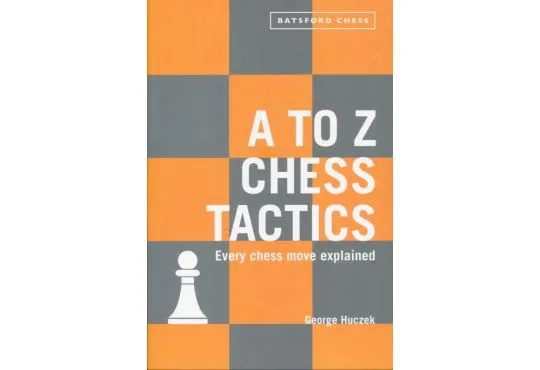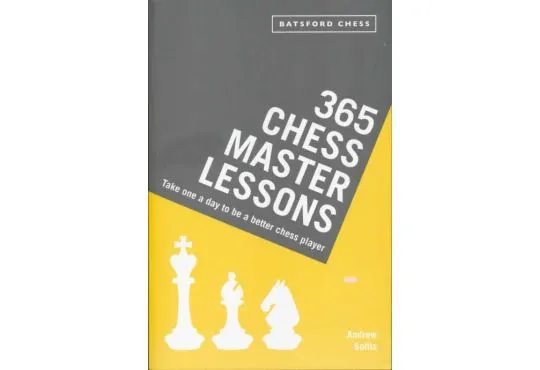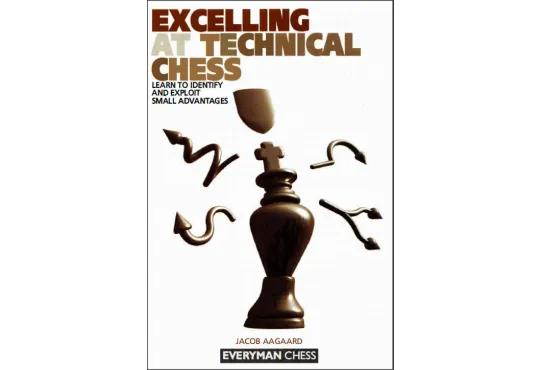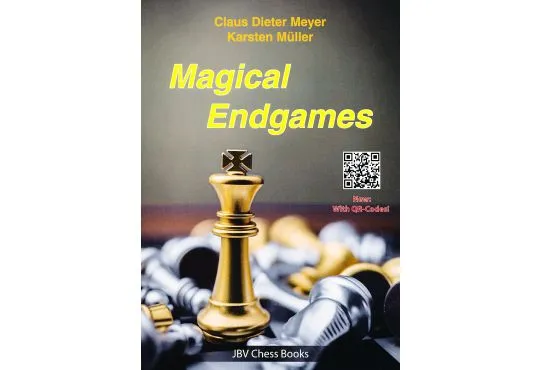The Ultimate Guide To Zugzwang And How to Use It
Zugzwang is a vital concept that all strong chess players should know about.
Understanding zugzwang and using it will radically improve your game. It really can be the difference between a draw and a win - or even between a win and a loss!
In this article, we:
- Explain what zugzwang is.
- Highlight where and when zugzwang is most likely to occur during your chess games.
- Provide examples of some of the most important zugzwang positions.

Table of contents
Zugzwang: Forced Moves To Make Your Opponent’s Position Worse
The word zugzwang comes from the German language. Translated into English, it literally means: “compulsion to move”.
In order to understand zugzwang, you must keep in mind that, in chess, players cannot skip their move. This may sound obvious, but in the midst of a tough game, this is a rather subtle nuance which can be easily foregotten.
-
 CLEARANCE - CHESS FOR NOVICES - Sabrina Chevannes - VOLUME 2Special Price $15.00 Regular Price $23.95
CLEARANCE - CHESS FOR NOVICES - Sabrina Chevannes - VOLUME 2Special Price $15.00 Regular Price $23.95
Most of the time in chess, having the move is a positive thing. A move can be used to develop a piece to a better square, create a threat against the opponent’s position, and so on.
However, this is not always the case! There can be situations where a player’s position will be worsened by any move they make. We call such situations zugzwang.
To further illustrate the concept, here is our first zugzwang example - one which most chess players will have already encountered at some point. The below diagram shows a classic king-and-pawn vs. king endgame situation. It is Black to move.
Right now, the Black king is perfectly positioned. It sits upon the square which the White pawn is ultimately trying to reach in order to promote. If the Black king had a way to remain on d8 for the rest of the game, then there would be no way for White to make progress.
However, due to the fact that it is Black’s turn, we can say that “Black is in zugzwang”. Black would love to “pass” their move and keep their king on d8 - but that is illegal under the rules of chess! Therefore, the Black king is forced to leave the d8 square.
Related: Sharpen your endgame skills with 100 Endgames You Must Know, by Jesus de la Villa.
Let’s say that Black plays Kc8. In that case, White can play Ke7, giving the pawn a clear path to promotion on d8 - resulting in an easily winning position for White.
Once Black’s king leaves d8, White’s pawn will soon be able to promote.
When Does Zugzwang Arise?
Zugzwang is much more likely to arise in the endgame.
The reason is: when there are still many pieces remaining on the board (as is the case during the opening and middlegame), there are more possible moves which can be made - reducing the probability that all of them would worsen the player’s position.
Remember, for a position to be “zugzwang”, every legal move must make that player’s position worse.
However, in a few very rare cases, zugzwang can occur in the middlegame. The most famous example is Saemisch vs. Nimzowitsch, 1923 - which is now known as the “Immortal Zugzwang Game”.
In the above position, Nimzowitsch (with the Black pieces) played 25. …h6!! The point behind this seemingly innocuous move was that Saemisch (with White) was left without a single move that didn’t worsen his position!
Despite White having nearly their entire army still on the board, White’s position is so tied down that every move loses. Realizing this, White resigned!
Related: One of the most classic chess strategy books of all time: My System, by Aron Nimzowitsch
However, zugzwang in the middlegame is extremely uncommon. It is precisely because of this rarity that the Saemisch-Nimzowitsch game became so widely renowned.
For practical purposes, it is much more useful to pay more attention to zugzwang possibilities in the endgame. That is what we shall cover in the rest of this article.
The Most Important Zugzwang Chess Tactics You Need To Know
What follows are some of the most common zugzwang situations which you may encounter in your own games.
By studying this list, you will become more aware of the possibility of zugzwang and be ready to take advantage of the opportunity when it arises!
Related: Learn more about important patterns in the endgame with our article on Everything You Need To Know About Stalemate In Chess.
King + Rook vs. King
Another instance of zugzwang that every chess player has experienced (apart from those who are brand new to the game) is the winning method with a king and rook versus a lone king.
This is one of the first checkmating techniques that those new to chess must learn - and it involves zugzwang!
In the below position, White is on the verge of victory. However, in order to actually checkmate the Black king, White must invoke zugzwang.
If White’s king tries to threaten checkmate with Kf3, then Black can prolong the game with Kh4.
To trap Black’s king, White needs to play a waiting move with their rook somewhere along the g-file. For example, Rg6. (Another move such as Rg7 would also work, with the same idea).
Now, Black’s king is in zugzwang. The safest square for the Black king is where it already is - on h3 - but Black must make a move! Kh4 would allow mate in one via Rh6#. The only other legal move available to Black is Kh2 - but by moving closer to the corner, the Black king will also be checkmated in just a few more moves.
Landmine Zugzwang
Material is equal in the diagram below, with each player having just one pawn left. However, the game is not a draw!
Two key squares are highlighted in red. Whichever player places their king on that square first will lose! To help with memorization, let us call these the “landmine squares”.
Let’s say it was White to move, and they were not being attentive to the concept of zugzwang. White could easily play Kd6?? - a very natural move which both attacks the Black pawn on e6 while also guarding their own pawn on d5. However, this is a losing blunder! White’s king has “stepped on the landmine” and White should now lose the game.
After Kd6?? from White, Black should play Kf5! At this point, the gravity of their error would dawn on the player with the White pieces. White now has no way to continue to defend their pawn.
Due to zugzwang, White’s king is forced to leave the d6 square. Black will then win the White pawn and, given correct endgame technique, Black should eventually be able to promote their own pawn and win.
Now that we have seen how White could lose due to zugzwang, let us rewind to the original position - where White should instead have played Kd7! With this move, White gets to benefit from zugzwang instead of falling victim to it.
-
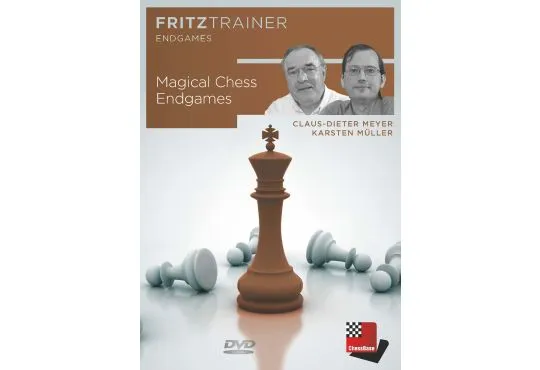 CLEARANCE - Magical Chess Endgames - Claus-Dieter Meyer/Karsten MullerSpecial Price $15.00 Regular Price $33.95
CLEARANCE - Magical Chess Endgames - Claus-Dieter Meyer/Karsten MullerSpecial Price $15.00 Regular Price $33.95 -
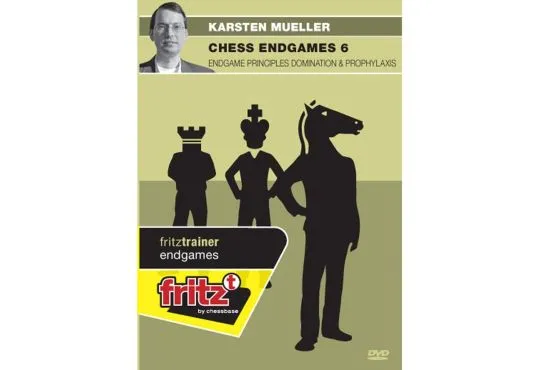 CLEARANCE - CHESS ENDGAMES - Endgame Principles Domination - Karsten Muller - VOLUME 6Special Price $15.00 Regular Price $33.95
CLEARANCE - CHESS ENDGAMES - Endgame Principles Domination - Karsten Muller - VOLUME 6Special Price $15.00 Regular Price $33.95
By playing Kd7! White still attacks the Black pawn - but with a far superior result compared to Kd6??. In order to defend their pawn, Black’s only move is Kf5. Black did not have much choice, but by landing their king on f5, it is now Black who has “stepped on the landmine”.
Only now should White play Kf5 - where we have exactly the opposite situation to that of before. Black’s king must now leave f5, at which point White’s king will win the Black pawn. Then, White will be able to promote their own pawn and win the game.
Airplane Zugzwang
Popular chess streamer Anna Rudolf has dubbed this endgame situation the “airplane zugzwang”. This moniker is a useful memory aid, so we will use it too!
With a pair of locked pawns, key squares exist on three squares either side of each player’s pawn in a pattern which resembles the wings of an airplane. Whichever king is able to reach one of their key squares first should win the game.
With White to move, White can play Kg6!, thereby arriving on one of the “airplane” key squares. Black’s king is placed into zugzwang and must retreat. With repeated zugzwangs against Black, eventually White’s king will be able to inch its way closer and closer to the Black pawn, and ultimately win it.
The Retreating King
Zugzwang may also arise in king-and-pawn endgames where there are more pawns on the board.
Notice how in the below diagram, Black has an extra pawn: there are five Black pawns, versus just four White pawns.
However, with White to move, it is White who has the winning position!
White should play Ke4, thereby putting Black into a no-win situation.
The hallmark of zugzwang! - All of Black's moves are bad.
- If Black advances their c-pawn or their g-pawn, then White will simply capture it.
- The only legal squares for the Black king to move to are on the 7th rank. As soon as the Black king retreats to any of those squares, the White king will be able to infiltrate further into Black’s position.
For example, if Black plays Kf7, then White can bring their king further forward with Kd5 (or Kf5).
It won’t be long until White’s king wins several of Black’s pawns. Pay attention to how quickly Black’s position collapses - all because of zugzwang!
Short Diagonals Zugzwang
When both sides have same-coloured bishops, and one side has a single pawn remaining, the weak side can sometimes secure a draw by being ready to sacrifice their own bishop for the strong side’s pawn.
In the below diagram, at first glance it may seem as though Black has done enough to draw the game. The Black bishop covers the critical b7 square - meaning that if White were to advance their pawn, Black would happily capture with Bxb7 and escape with half a point.
However, White should recognize that Black is very short on moves. The Black bishop and king are ideal where they are, but don’t have many other available squares to maintain their tenuous defense against the White pawn’s advance.
With zugzwang ideas in mind, White could play the clever Bg4!
Now Black’s position is completely hopeless. Any king move loses, while White’s Bg4 move has taken away the c8 square from the Black bishop - the only other place it could previously go to in order to keep an eye on the b7 square. Due to zugzwang, White will soon promote their pawn and eventually win the game.
Rook vs. Bishop Zugzwang
The rook vs. bishop endgame is usually a theoretical draw, unless the side with the bishop’s king ends up in the “wrong corner” - as in, the corner of the same color as their bishop.
Here, Black finds themselves in such an unfortunate situation. Notice how Black’s king is boxed in near the h8 corner - a dark square - and Black possesses a dark-squared bishop. This spells disaster for Black.
Last move, Black was forced into playing Bf8 - the only move to prevent checkmate.
Now, White should use zugzwang to achieve mate in two.
With Rc8! (or any other rook move along the 8th rank), White takes advantage of the fact that Black is in zugzwang. Black’s only legal move is Kh8, whereupon Rxf8# ends the game in White’s favor.
Summary: Using Zugzwang In Your Games
As we have shown, zugzwang is most commonly found in the endgame. You should always keep your eye out for situations where your opponent is short on moves - as chess tactics involving zugzwang can come to the fore.
To continue your education in zugzwang and other vital endgame concepts, we recommend Silman’s Complete Endgame Course, available from the USCF store.
Strong chess players know they cannot neglect the endgame, and this book has everything you need to know - whatever your level.
Frequently Asked Questions
Zugzwang is a chess concept which refers to a situation in which any move a player makes will worsen their position. Zugzwang arises most often in the endgame.
“Zugzwang” comes from German. It translates to “compulsion to move” in English. The term was common throughout German chess circles in the 19th century, and became prevalent in English language publications from the 1930’s onwards.
The chess game between Saemisch vs. Nimzowitsch, best known as the “Immortal Zugzwang Game” was played in Copenhagen in 1923. It is one of a very small number of chess games where zugzwang themes have proven decisive in the middlegame (instead of in the endgame, where zugzwang is far more common).


